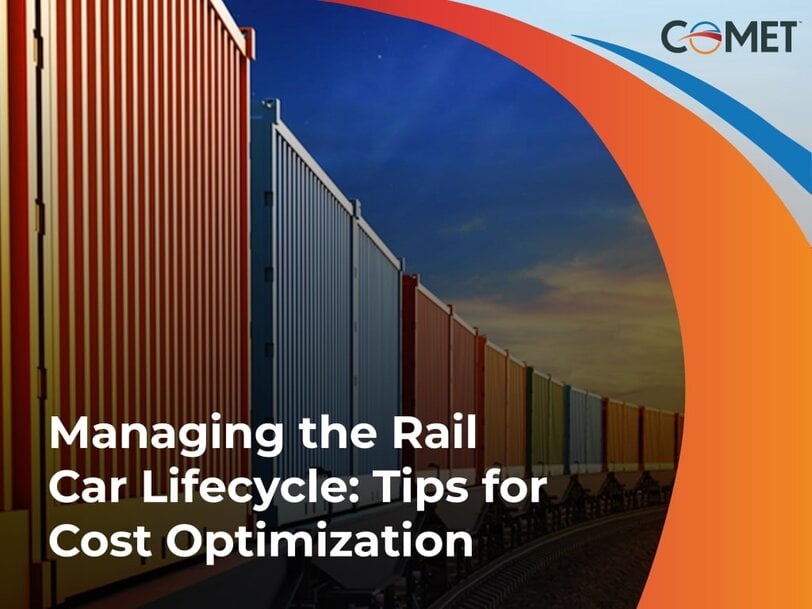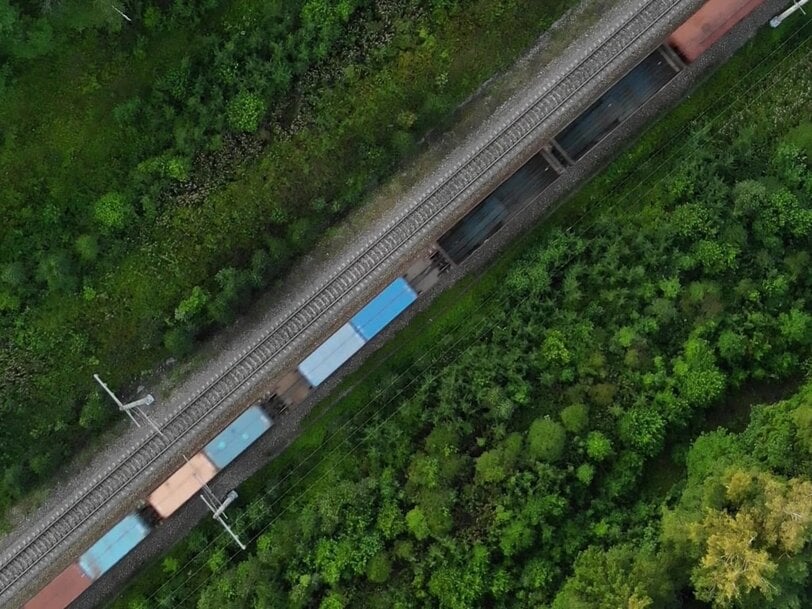Managing the Rail Car Lifecycle: Tips for Cost Optimization
Rail cars are long-term assets that play a critical role in the transportation of goods across the country.
www.cometind.com

However, their substantial initial investment and ongoing maintenance costs can make managing the rail car lifecycle a complex challenge.
Effective rail car lifecycle management involves striking a balance between prolonging their useful life and minimizing costs. By leveraging reconditioning techniques and adhering to AAR (Association of American Railroads) standards, businesses can significantly enhance railcar performance and maximize their return on investment (ROI).
This guide offers actionable tips for managing the lifecycle of rail cars, focusing on cost optimization and asset longevity. Whether you’re overseeing a fleet of rail cars or considering strategic investments in reconditioning, this article will provide you with key strategies to extend the lifespan of your assets while controlling costs.
Why Effective Rail Car Lifecycle Management Matters
Rail cars typically represent a substantial financial investment, yet their potential lifespan spans decades. With proper maintenance and strategic upgrades, rail cars can remain operational far beyond their average lifespan. Effective lifecycle cost management ensures ongoing operational performance, reduces downtime, and delays the need for costly replacements. By proactively managing your fleet, you can protect the long-term value of your assets while meeting operational demands and regulatory requirements.
Extending Rail Car Lifecycle Through Strategic Reconditioning
The Role of Reconditioning in Rail Car Management
Rail car reconditioning is more than just routine maintenance; it’s a proactive strategy to sustain and enhance rail car performance. Reconditioning services involve the systematic inspection, repair, and upgrade of rail car components to ensure they remain compliant with industry standards and capable of handling operational requirements.
A reconditioning performed to AAR standards can extend a rail car’s lifecycle by as much as 15 years. For context, this means your assets can deliver over 30% more value during their operational lifespan, allowing you to defer the expense of replacing your fleet with new equipment.
Meeting AAR Standards and Regulatory Compliance
The Association of American Railroads (AAR) has established rigorous standards that govern rail car maintenance and interchangeability. These standards ensure that rail cars are safe and efficient for use across all Class I railroads in the United States.
Reconditioning your rail cars to meet AAR standards not only prolongs their lifecycle but also ensures that they are eligible for interchange, which is critical for maintaining operational flexibility. Failing to meet these standards can result in costly disruptions, delays, and penalties. Trusted refurbishment providers like COMET help businesses maintain compliance by strictly adhering to AAR and U.S. interchange rules.
Delaying Costly New Equipment Purchases
Purchasing a new rail car can be an expensive endeavor, especially for businesses looking to expand or upgrade their fleets. Strategic reconditioning offers a cost-effective alternative, enabling companies to maximize the value of their existing assets and postpone major capital expenditures. By refreshing components, updating safety features, and improving performance, reconditioned rail cars can support operational demands without the need for new acquisitions.
Ensuring Quality Through Trusted Reconditioning Providers
When selecting a reconditioning provider, it’s crucial to choose a partner with a proven track record of quality and reliability. COMET, for example, earned the highest rating in an independent audit conducted by one of the leading Class I railroads in North America. This recognition underscores the company’s commitment to excellence in refurbishing services, giving businesses the confidence that their assets are in capable hands.
Benefits of Strategic Rail Car Lifecycle Management
Reduced Lifecycle Costs
Regular maintenance and strategic refurbishments lower the total cost of ownership (TCO) by minimizing unexpected repairs and downtime. Proactive management ensures that issues are addressed before they escalate into costly problems, leading to lower long-term expenses.
Improved Rail Car Performance
Well-maintained rail cars deliver consistent performance, ensuring safe and efficient transportation. Enhancements achieved through reconditioning, such as upgraded braking systems or reinforced structures, further optimize asset performance.
Maximized ROI and Asset Value
By extending the lifespan of your rail cars and maintaining their compliance with industry standards, you can maximize their resale value and overall ROI. Businesses with well-managed fleets enjoy a competitive advantage, as their assets continue to provide value over an extended period.
Implementation Tips for Effective Rail Car Lifecycle Management
To make the most of your rail car fleet, consider these practical tips for managing their lifecycle:
1.Conduct Routine Inspections: Schedule and document regular inspections to identify wear and tear, structural issues, or compliance gaps. Keep track of maintenance history for each rail car in your fleet.
2.Partner with Trusted Providers: Work with reconditioning providers that meet AAR standards and have a proven reputation for quality. This ensures that your rail cars remain operational and compliant with regulations.
3.Monitor Performance Metrics: Track key performance indicators (KPIs) such as downtime, maintenance costs, and load capacity to identify areas for improvement.
4.Plan Maintenance Proactively: Develop a maintenance schedule that aligns with operational demands while minimizing downtime. Address minor issues before they escalate into major repairs.
5.Educate Your Team: Train employees on best practices for rail car management, maintenance protocols, and safety standards to ensure consistent performance across your fleet.
Driving Better Business Outcomes with Reconditioning
Reconditioning rail cars isn’t just a repair strategy; it’s an investment in the longevity and efficiency of your fleet. By aligning with AAR standards, leveraging trusted providers, and adopting proactive lifecycle management techniques, businesses can enhance operational performance, save on costs, and better prepare for the future.
Reconditioning helps transform rail car management from a reactive process to a strategic business driver. Organizations that prioritize asset optimization achieve greater resilience in an increasingly competitive transportation landscape.

The Importance of Strategic Fleet Investments
Managing the rail car lifecycle effectively requires a combination of routine maintenance, expert reconditioning, and a commitment to compliance with AAR and U.S. interchange standards. Organizations that invest in proactive lifecycle cost management gain the benefits of extended railcar performance, increased ROI, and reduced operational disruptions.
For businesses looking for a trusted partner in railcar reconditioning, COMET stands out as a leader in the industry. With a well-documented commitment to quality and compliance, COMET helps organizations achieve long-term asset value and operational efficiency.
FAQs
Q: What is rail car lifecycle management?
A: Rail car lifecycle management involves maintaining, repairing, and upgrading rail cars to extend their service life while optimizing operational performance and minimizing costs.
Q: How does reconditioning extend the life of a rail car?
A: Reconditioning includes inspecting, repairing, and upgrading key components to meet industry standards, which can add up to 15 years of additional service life.
Q: Why is AAR compliance important for rail cars?
A: AAR standards ensure safety, interoperability, and regulatory compliance across rail networks, allowing rail cars to be used across Class I railroads without operational disruptions.
Q: What are the cost benefits of reconditioning versus buying new rail cars?
A: Reconditioning is significantly more cost-effective, allowing businesses to postpone large capital investments while maintaining fleet performance and reliability.
Q: How do I choose the right reconditioning provider?
A: Look for providers with a strong reputation, proven adherence to AAR standards, and documented success in extending asset value—such as COMET, which has received top industry ratings.
www.cometind.com

